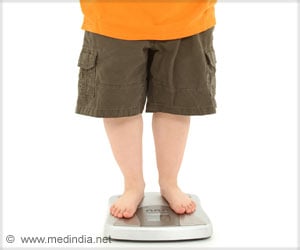A new study finds that there has been a three-fold increase in the number of severely obese children in America in the last 25 years.
A new study finds that there has been a three-fold increase in the number of severely obese children in America in the last 25 years.
Obesity expert Dr Joseph Skelton, at Brenner Children's Hospital, part of Wake Forest University Baptist Medical Center insists that many children could be at the risk of diabetes and heart disease."Children are not only becoming obese, but becoming severely obese, which impacts their overall health," said Skelton, lead author and director of the Brenner FIT (Families in Training) Program.
"These findings reinforce the fact that medically-based programs to treat obesity are needed throughout the United States and insurance companies should be encouraged to cover this care," he added.
During the study, Skelton and colleagues compared data from the National Health and Nutrition Examination Survey (NHANES) involving 12,384 children.
Severe childhood obesity is a new classification for children and describes those with a body mass index (BMI) that is equal to or greater than the 99th percentile for age and gender.
For example, a 10-year-old child with a BMI of 24 would be considered severely obese, Skelton said, whereas in an adult, that is considered a normal BMI.
Advertisement
Researchers also looked at the impact of severe obesity and found that a third of children in the severely obese category were classified as having metabolic syndrome, a group of risk factors for heart attack, stroke and diabetes.
Advertisement
The findings appear in Academic Pediatrics.
Source-ANI
ARU








